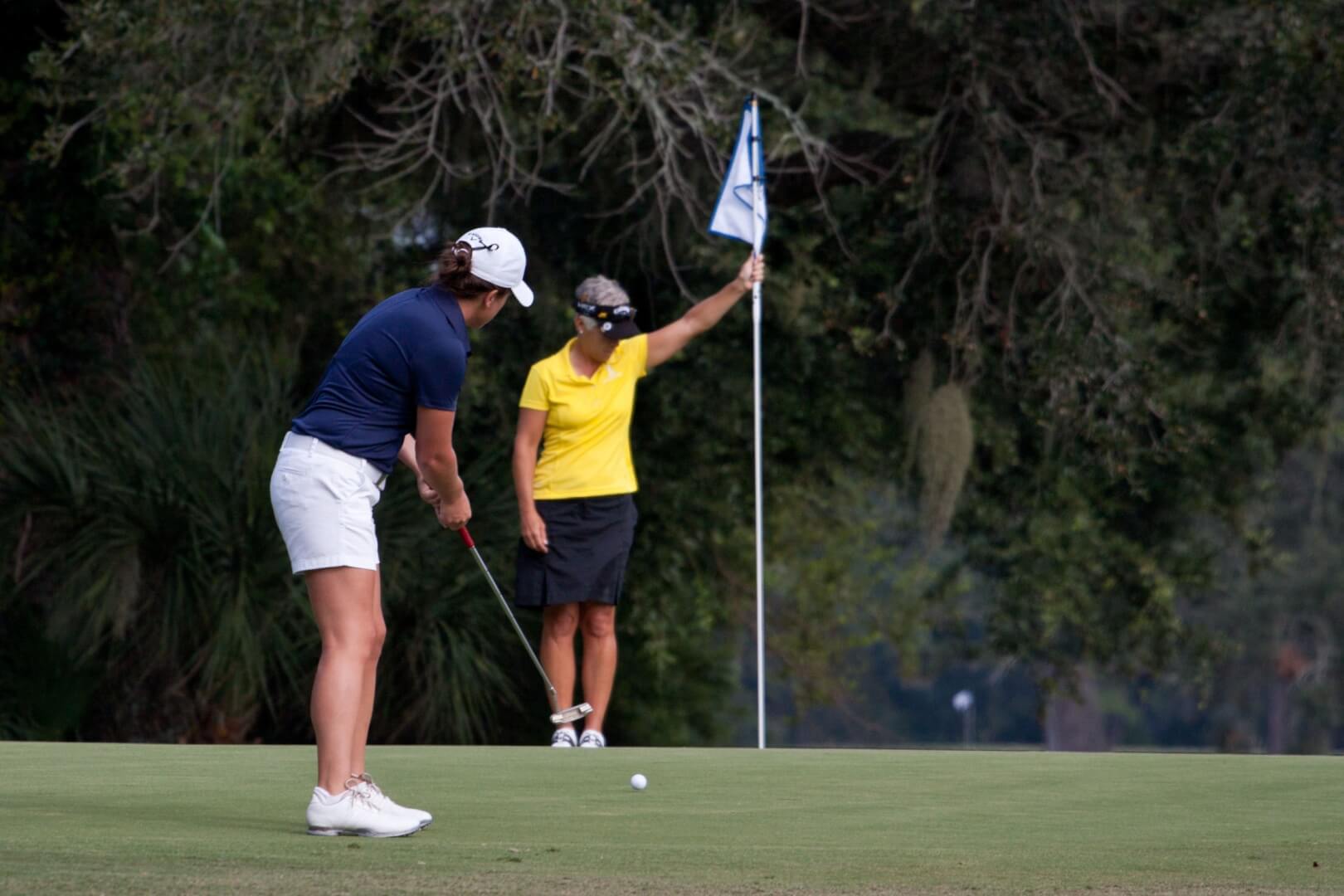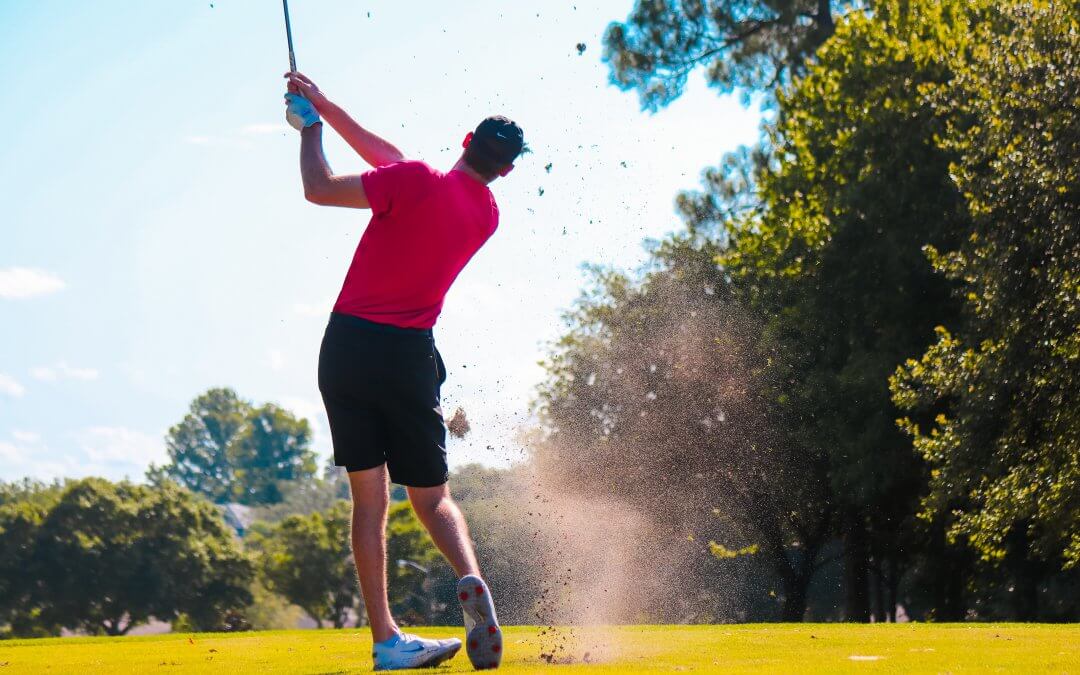With golf courses open again here in Ontario, we know many of you rushed to the course to make up for the lost time. Perhaps this year more than ever, we also know that some of you may have already experienced or are still experiencing some back pain after hitting the course. Even though golf is considered a low-impact sport, it is still a full-body workout that requires proper prep work and mechanics in order to avoid pain and injuries. We thought it would be helpful to outline some of the most common reasons for golfing back pain and some tips we recommend in preventing it.
Swing Faults That Cause Back Pain
The asymmetrical nature of the golf swing leaves a lot of room for error and injury. You are working at high speeds with strong rotational and compressive forces that require correct technique. We recommend focusing on movement patterning and getting lessons so that you can learn how to promote proper swing techniques. Whether you are new to the sport or have been playing for years, making sure your swing is safe for your body is key to avoiding back pain. Here are the most common swing faults that can hurt your back on the course.
1) Poor Posture
Golf posture can be tricky to master but it’s so important for your back’s health. You want to keep your lower back straight and your weight evenly distributed between your feet. You may be tempted to stick your butt out when setting up but be careful not to do so too much because it will encourage you to incorrectly arch your lower back. This posture is referred to as S Posture and it will inhibit your abdominal and gluteus muscles from activating. Instead, bend your knees slightly (to prevent yourself from hunching over) so that your muscles can activate properly and protect your spine.
2) Improper Backswing Rotation
You want to keep your core muscles engaged throughout your backswing. This will allow your hips and thoracic spine to rotate properly and prevent overextension through your lower back. You also want to watch out for the reverse spine angle which is when your spine tilts towards your target at the top of your backswing. This mistake will lead to increased extension, the overuse of your back extensor muscles, inhibit your lower abdominal muscles, and place excessive force on your lower back through impact. Think of this as putting a whole lot of crunch on your spine which will place excessive compression and loads on your vertebrae. All of this will lead to increase back pain on and off the course. Try to remember the sequence of arms then shoulders then hips during your backswing.
3) Early Extension
Your downswing is also an area of concern and could be the culprit of your back pain. As you begin to bring your club back down, your hips should always uncoil first. Your downswing sequence should be the opposite of your backswing sequence so think hips, shoulders, then arms. If your hips and lower body do not rotate first or at all through impact they will push forward instead and lead to back extension. If you find yourself leaning away from the ball through and after impact (i.e. if your weight is going backwards instead of forwards) then this is most likely your issue. Actively try to solve this issue to decrease the load on your lower back.
4) Improper Follow Through Release
Hold that pose! It may feel silly at the beginning but a proper and stable follow through is essential to a good golf swing. As you follow through, you want to allow your back heel to fully release so just your toe remains on the ground. This prevents excessive torque through your lower back. If you are swinging correctly with good impact, this release should feel natural and necessary. Remember to maintain a strong spinal posture and do not overextend.

Tips to Avoid Back Pain
As you work on improving your swing, there are a couple of other things you can be doing to avoid back pain on and off the course. Some of the best things you can do for your golf game are to stay active off the course, strengthen and condition your muscles, use the proper equipment, and make sure to rest properly. Here are a few of our other tips so that you can keep playing and improving your game.
1) Start Slow
This one will be annoying if you’re eager to get in as much golf as possible this season, but it is crucial. If you are new to the game or have not played in a while, try not to overdo it. Start by going to the driving range a couple of times and start with your shortest club then work your way up to your driver. Then try 9 holes before working your way up to a full 18.
2) Stretch
You probably noticed that a lot of the above golf swing mistakes are related to improper rotation. A lack of range of motion both at the hips and the thoracic spine will often lead to excessive rotation in your spine during your golf swing. There are plenty of golf warmup examples and videos online that we recommend you do before and after each round to encourage more movement throughout your body. Remember that golf requires a balance of strength and flexibility, so you want a solid stretching routine to help your muscles remain supple.
3) Talk to Your Physiotherapist
We are here to help with your golf pain. We are healthcare professionals that can help golfers of all ages and lifestyles gain their desired level of active living. We can create treatment plans specifically tailored to your needs and swing so that you can improve your golf game and physical mobility this season. If you are experiencing pain, we can help manage, reduce, and prevent it while we build your strength and improve balance. Don’t ignore your pain, let us help!

—
We hope this blog helps you better understand why your back may be hurting after a round of golf and how you can work to prevent it from happening again in the future. If you need more help identifying if you are experiencing golfing pain, our physiotherapy teams in Kitchener (Lancaster and Driftwood), Baden, or Waterloo are here to help you diagnose symptoms and create a treatment plan to help you get back to feeling your best on the course.
Want more lifestyle advice on how to improve your overall health and wellness? Contact our Livewell Health and Physiotherapy Kitchener (Lancaster and Driftwood), Baden, or Waterloo teams to get more information and book your next appointment. You can also reach out to us by email or social media and one of our team members would be more than happy to answer any of your questions! All of our practitioners have more tips and expert guidance to help improve the overall quality of your life.

